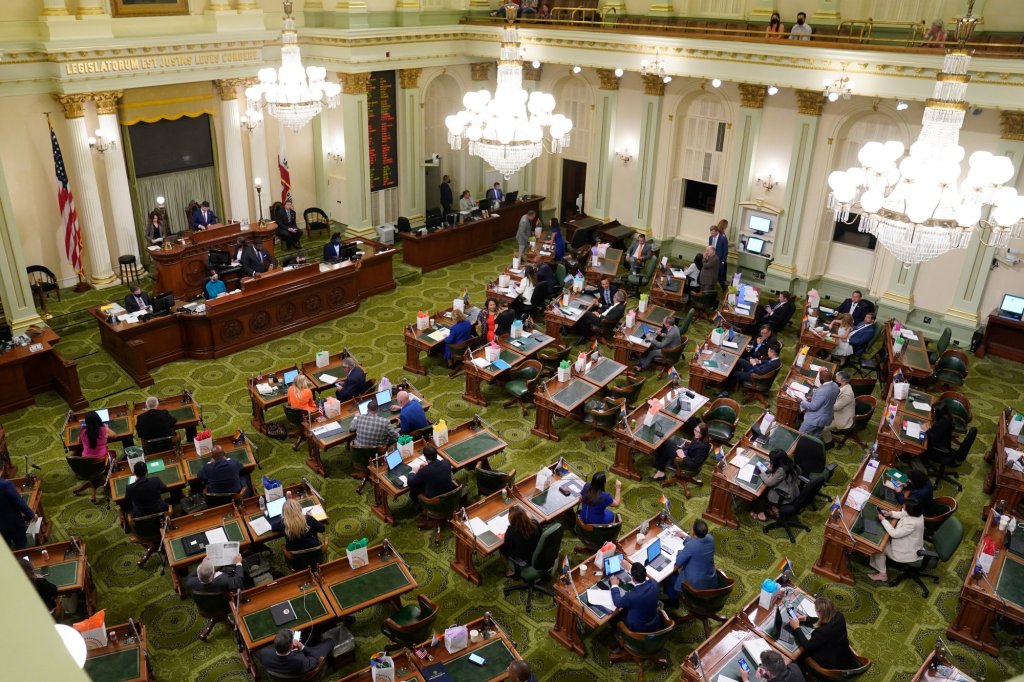
Were we able to transport ourselves back in time 50 years and into California’s Capitol, we would find a governor seeking and enjoying massive attention by national political media as he eyes some greater office. We’d also find a Legislature dealing with conflicts among influential interests with heavy financial impacts.
In other words, the Capitol’s dynamics in 1975 were pretty much what they are today.
The resemblance even extends to specific issues. For instance, then-Gov. Jerry Brown was touting a “peripheral canal” in 1975 to carry water around the Sacramento-San Joaquin Delta. Gavin Newsom was seven years old then, but now as governor is waging the same campaign for a tunnel to do the same thing and is facing the same opposition.
Other conflicts that confronted Brown and legislators a half-century ago can be found again among the hundreds of bills introduced so far in the 2025 legislative session.
On Tuesday, for instance, the Senate Judiciary Committee took up Senate Bill 29, a measure that would extend indefinitely the ability of survivors of people who died as a result of medical malpractice to sue for “pain, suffering, or disfigurement.” During the COVID-19 pandemic, the Legislature provided a temporary window for such suits because the court system was in pandemic-induced turmoil.
Insurers and other opponents of the measure contend that it violates a 2022 compromise on the limits of malpractice damages, a deal that seemingly ended a 47-year-long political battle that began when Brown signed the Medical Injury Compensation Reform Act in 1975.
A half-century ago, doctors and other health care providers were also skirmishing over “scope of practice,” the body of state law that defines in great detail which medical professionals can perform which procedures on which parts of the human body.
The hardest-fought battle pitted orthopedic surgeons against podiatrists over the legal right to perform ankle surgery, and it raged for years until the latter prevailed. Ever since, there have been similar conflicts too numerous to list, such as psychologists vs. psychiatrists over the right to prescribe drugs, optometrists vs. opticians over eye treatment — and even veterinarians vs. dog groomers over who could legally brush a dog’s teeth.
The current version of this perennial turf battle is Assembly Bill 876, which would allow nurse anesthetists to provide their services more independently — the latest in a years-long string of legislative efforts by nurses to bolster the scope of their practices.
Soon after becoming governor, Brown pledged to reform workers’ compensation, the system that provides income and medical care to those with work-related illnesses and injuries. That effort failed, but as one of the last acts of his first governorship, Brown signed a bill to increase payments to such workers by about $3 billion a year, angering employers who must provide coverage.
That touched off a predictable cycle in which a majority of the workers’ compensation interest groups would work out some sort of systemic overhaul once each decade and get it enacted over objections of groups left out of the negotiations.
The last such instance occurred in 2012 when Brown, once again governor, negotiated and signed legislation to raise benefits again, but impose new rules on eligibility and medical care to save enough money to pay for the benefits.
The Capitol is overdue for another workers’ compensation deal and a newly introduced measure, Senate Bill 555, could be the vehicle. It would increase benefits to workers with partial but permanent disabilities, which have been capped at $1,256 a month for the last decade.
The bill would provide automatic cost of living increases and is certain to draw fire from employers — another chapter in what has been one of the Capitol’s longest running high-dollar conflicts.
Dan Walters is a CalMatters columnist.



